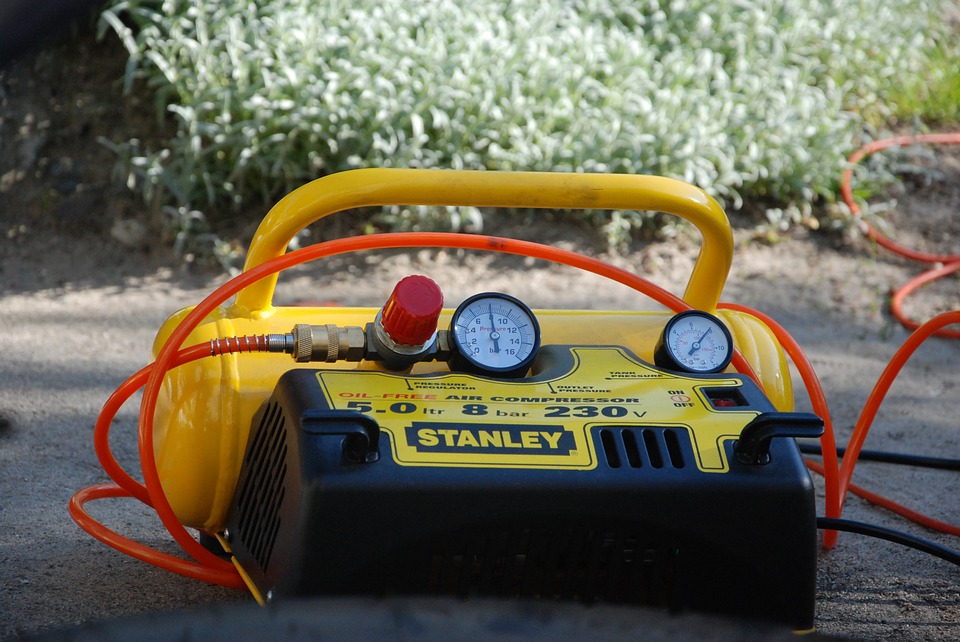Air Compressor Safety Tips

Air compressors are commonly used in workplaces that require the use of pressurized air. Typically, air compressors are classified as either low-pressure, medium-pressure or high-pressure. Low-pressure air compressors discharge pressure at 150 psi or less. Medium-pressure air compressors discharge air at 151 to 1,000 psi. High-pressure air compressors discharge air at over 1,000 psi.
As with any powered machinery, it's important to follow some basic safety tips when using an air compressor to prevent bodily injury.
Use Gas Air Compressors Outdoors
Unless it's powered electrically, you should always use an air compressor outdoors. Gas air compressors should never be used indoors, as they produce toxic fumes in the form of carbon monoxide.
Wear Safety Goggles and Gloves
For personal protective equipment (PPE), you should wear impact-resistant eyewear and gloves. There have been numerous reports of workers sustaining serious eye injury as a result of pressurized air. Something as simple as impact-resistant goggles or glasses, however, can protect against such injury.
Use a Self-Retracting Cord
Ideally, you should use an air compressor with a self-retracting cord. Allowing long cords to lie on the floor creates a serious tripping hazard. If a worker accidentally trips on the cord, he or she may injure themselves. With a self-retracting cord, excess cordage is consolidated into a bundle instead of being lain on the floor.
Use an OSHA-Approved Nozzle
You should also use an OSHA-approved nozzle with your air compressor. If the nozzle is bad, it may release excess air at extremely high pressures; thus, increasing the risk of bodily injury. OSHA-approved nozzles feature safety mechanisms to better control the flow of air and reduce the risk of injury.
Check for Oil and Air Leaks
Try to get into the habit of checking your air compressor for both oil and air leaks each time before using it. Even if a leak is small, using the air compressor could cause the hose or other components to blow due to the change in pressure. If you find a leak -- either oil or air -- do not use the air compressor until it has been fixed.
Follow Manufacturer's Recommended Maintenance
Be sure to follow the manufacturer's recommendations regarding maintenance for your air compressor. This maintenance may include some of the steps listed here. Additionally, it may also include checking for safe operating temperature, changing the oil, checking for differentiate pressure in the air filter, etc.
Recent Posts
-
Fire Safety in the Workplace: What You Need to Know
What steps are you taking to prevent fires in your workplace? According to the U.S. Occupational Saf …Aug 23rd 2023 -
Is It Safe to Go Jogging With a Cold Infection?
If you're suffering from a cold infection, you might be wondering whether it's safe to go jogging. T …Aug 22nd 2023 -
5 Safety Tips to Follow When Using a Powder-Actuated Tool
Powder-actuated tools are commonly used to join materials to steel and concrete. Also known as Hilti …Aug 20th 2023



